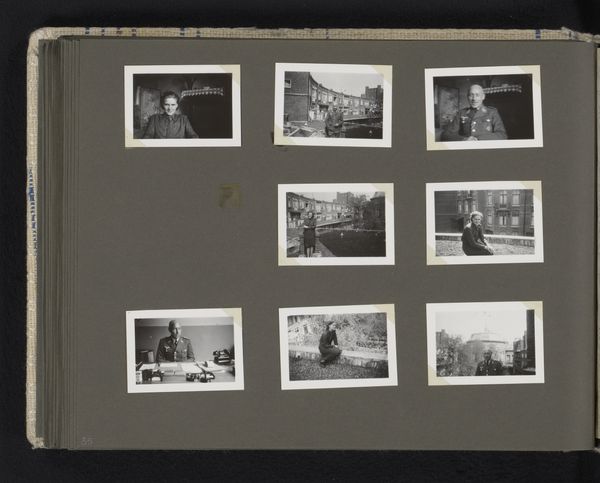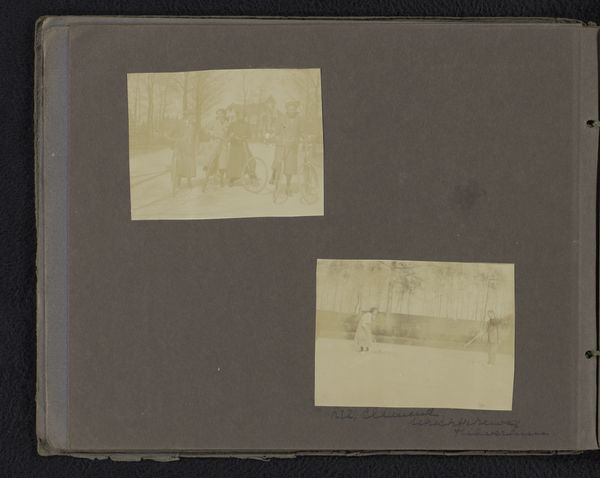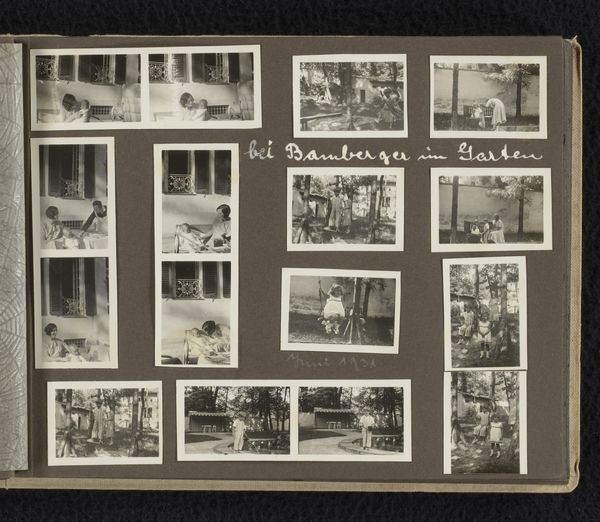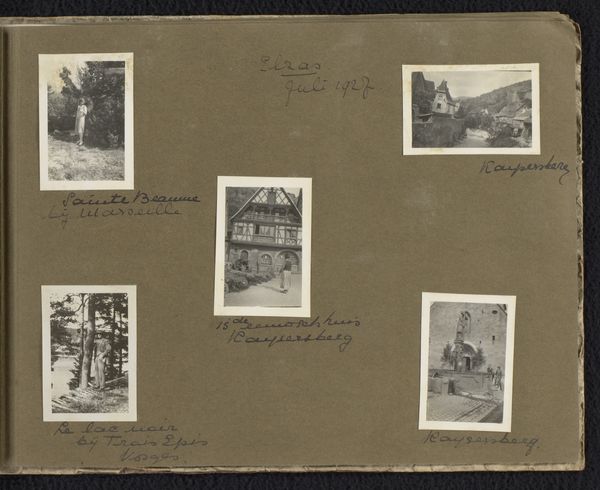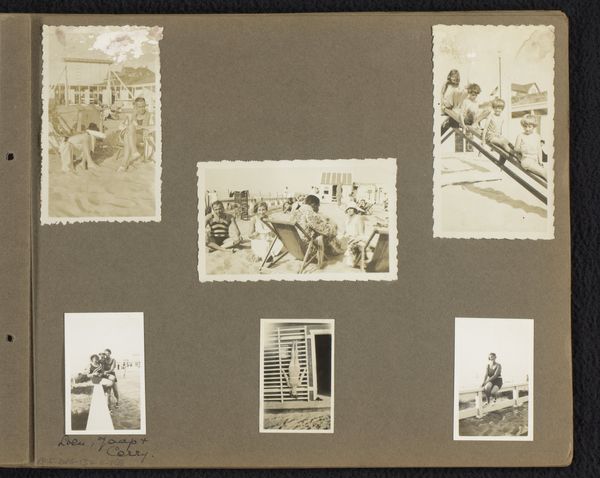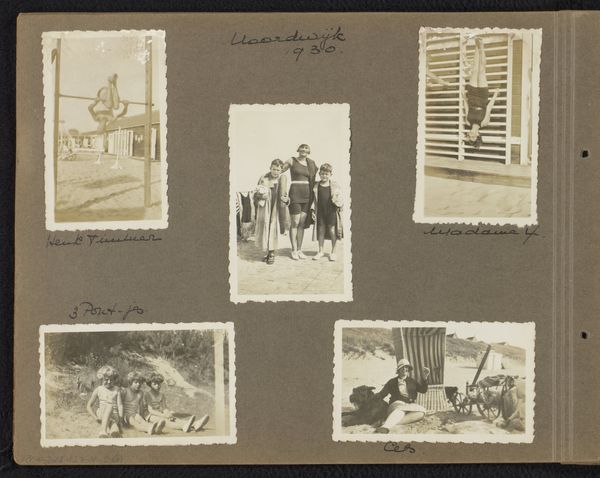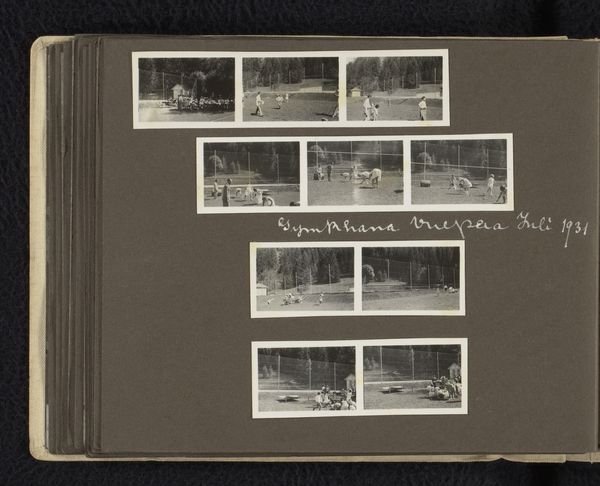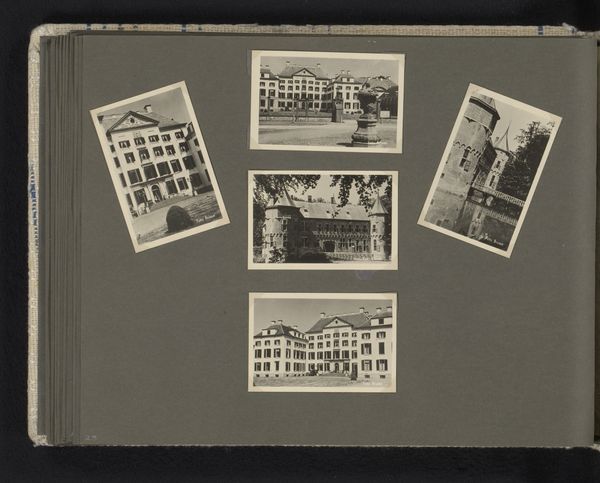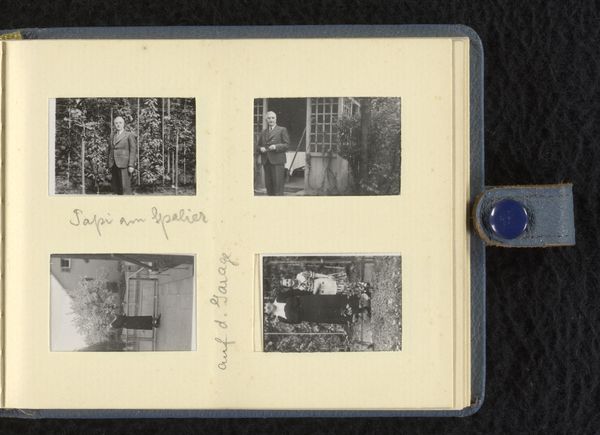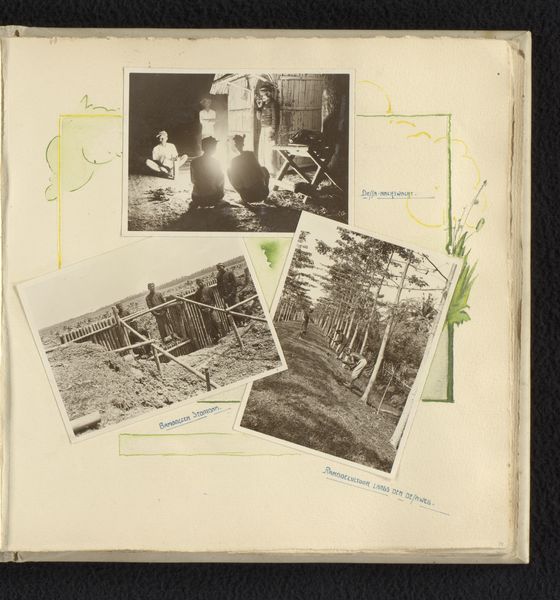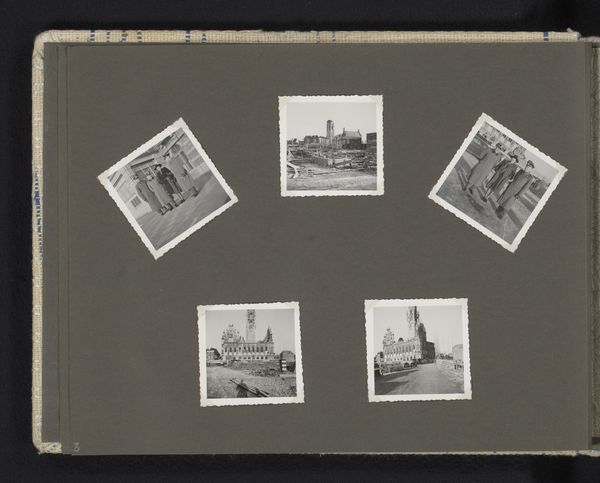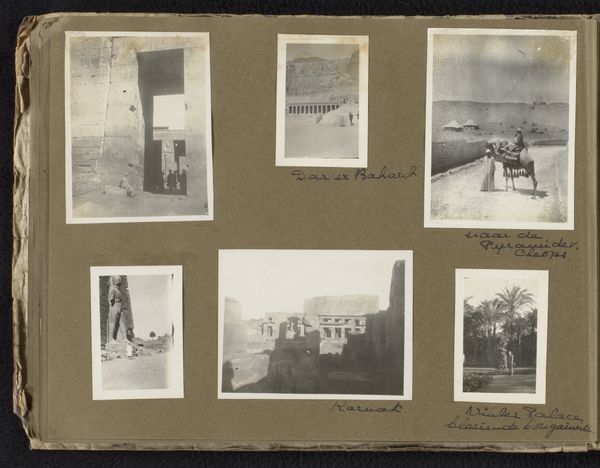
Isabel Wachenheimer voert duiven op de Feldhernnhalleplatz, juni 1931, München 1931 - 1936
0:00
0:00
Dimensions: height 27 mm, width 40 mm, height 150 mm, width 210 mm
Copyright: Rijks Museum: Open Domain
Curator: These gelatin-silver prints, taken between 1931 and 1936, capture Isabel Wachenheimer feeding pigeons at Feldherrnhalleplatz in Munich. It's a collection of sequential images, almost like a film strip. What's your immediate reaction to it? Editor: The immediate feeling is one of gentle domesticity sharply juxtaposed with looming architecture. There’s a certain everyday-ness framed against something far more imposing. Curator: Indeed. Considering the historical context, this domesticity gains further layers. The Wachenheimer family was Jewish. Documenting everyday moments such as these, especially with rising antisemitism, could be seen as an act of quiet resistance or a way to reclaim their narrative amidst increasing persecution. The images become evidence of a life that was both ordinary and extraordinary. Editor: I see it, yes, the silver gelatin print, as a process, involved labor and chemicals; it speaks to a specific time when photography had a tangible, almost alchemical quality. This labor of creating family snapshots, however modest, reveals an intention to preserve not just memory, but their presence in a world intent on erasure. Curator: Absolutely. The Feldherrnhalleplatz itself is laden with historical weight. The location was infamously the site of the Beer Hall Putsch in 1923. Placing Isabel Wachenheimer there, amidst the pigeons, shifts the focus to her personal experience, even subverting the space's loaded symbolism. Editor: And let's not forget the materiality of the birdseed. The act of feeding; providing sustenance in a public square, points toward generosity in the face of increasing scarcity of both food and tolerance during this period. Feeding the birds becomes almost an act of material defiance. Curator: Considering Wachenheimer's Jewish identity, it speaks to the broader issues of visibility, marginalization, and resilience. This location has witnessed historical shifts. The photograph doesn't offer a romantic depiction; it reveals a life existing despite and within a volatile social reality. Editor: Exactly. Ultimately, analyzing these photographs emphasizes how simple acts—the processing of silver, the offering of birdseed—became tools for resisting dehumanization. Each image is testament to lives determined to leave a trace in the face of destruction.
Comments
No comments
Be the first to comment and join the conversation on the ultimate creative platform.
